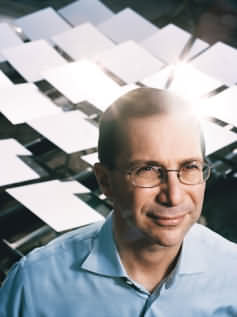Wash Off Your Environmental Bad Karma with TerraPass
A startup called TerraPass has an idea that can help you pay off some of the debt you owe to the environment. As featured in another Wired story,[1] TerraPass sells car stickers ($40 - $80 depending upon the size of your car) the money from which is invested in projects that reduce CO2 emissions.
TerraPass is an innovative emissions trading concept for vehicle owners that works in a simple way. You determine how much emissions your car makes. You buy TerraPass credits of the equivalent amount. The company (TP) invests that money in environmental projects aimed at reducing emissions.
So you essentially volunteer a penalty for harming the environment. The money then gets spent on undoing the harm.
Wonderful.
Emissions trading is already employed across many industries all over the world. It's heartening to see that it's been successful. From the story:
Under the system, industrial operations that spew less than their share of emissions can sell a credit to companies that fail to keep gunk out of the air. In effect, the dirtier factories can pay greener operations to do the work of cutting emissions. The approach has taken off worldwide, spawning a billion-dollar market.
Although TerraPass is currently meant only for vehicular emissions yet its easy to imagine where it could lead one day. Think of a world, say, 25 years in the future, in which all individuals in an entire city or a state are mandated by law to pay for not just their vehicular emissions but the amount of waste they generate in their homes, energy they consume and so on. The money would be utilised in elimination of the waste in environmental friendly ways, planting forests and so on.
It's almost surreal to imagine a utopian world in which everyone pays to erase the bad they do to the environment.
Wired story: SUV Redemption Sticker
TerraPass
Emissions Trading
Small is Beautiful: Economics as if People Mattered by E. F. Schumacher (a book on why the current economic activity is unsustainable, an alternative to the way we do business, a guide on how to live, and more)
Notes
[1] I'm impressed with Wired magazine's coverage of environmental issues and alternative energy stories. For a technology magazine, that's quite commendable. I'm sure this is a definite policy and it's even likely that there's top level mandate behind this in the company.


 Now comes a remarkable idea that could hasten the change and in the process might go on to become the greatest venture creation opportunity of recent times. Wired Magazine has the story of Bill Gross, dotcom entrepreneur and founder of incubator idealab, who alongwith his team at startup Energy Innovations has invented a rooftop solar concentrator to convert solar energy into electric current for household consumption at about half the cost of traditional solar panels.
Now comes a remarkable idea that could hasten the change and in the process might go on to become the greatest venture creation opportunity of recent times. Wired Magazine has the story of Bill Gross, dotcom entrepreneur and founder of incubator idealab, who alongwith his team at startup Energy Innovations has invented a rooftop solar concentrator to convert solar energy into electric current for household consumption at about half the cost of traditional solar panels.